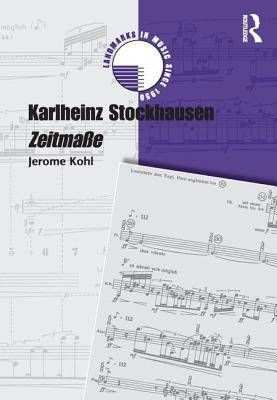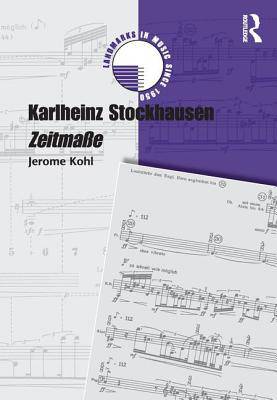
- Retrait gratuit dans votre magasin Club
- 7.000.000 titres dans notre catalogue
- Payer en toute sécurité
- Toujours un magasin près de chez vous
- Retrait gratuit dans votre magasin Club
- 7.000.000 titres dans notre catalogue
- Payer en toute sécurité
- Toujours un magasin près de chez vous
Description
Zeitmaße is one of a group of four acknowledged masterpieces composed between 1955 and 1957 that together established Karlheinz Stockhausen as the leading figure in the European avant-garde. Of the four works, it is the only one that has not been thoroughly analysed from the composer's sketches and, for this reason, remains the least-well understood. In this volume, Jerome Kohl provides a much-needed analysis of Zeitmaße, considering its standing in the group and in the wider context of Stockhausen's output. Using recently published correspondence and other documentation from the period, together with surviving sketch material, Kohl investigates the compositional procedures employed in Zeitmaße and their evolution. He discusses the wide range of influences discernible in the work, from that of both past generations of composers and contemporaries, to the impact of Stockhausen's studies in acoustics, phonetics and information theory on his music. The book closes with an examination of the reception of Zeitmaße and its associated concepts in the years following its composition, and shows how the key concepts utilized in the work are themselves a reflection of the properties seen in the very Zeitgeist that produced them.
Spécifications
Parties prenantes
- Auteur(s) :
- Editeur:
Contenu
- Nombre de pages :
- 164
- Langue:
- Anglais
- Collection :
Caractéristiques
- EAN:
- 9780754653349
- Date de parution :
- 05-12-16
- Format:
- Livre relié
- Format numérique:
- Genaaid
- Dimensions :
- 155 mm x 231 mm
- Poids :
- 399 g







